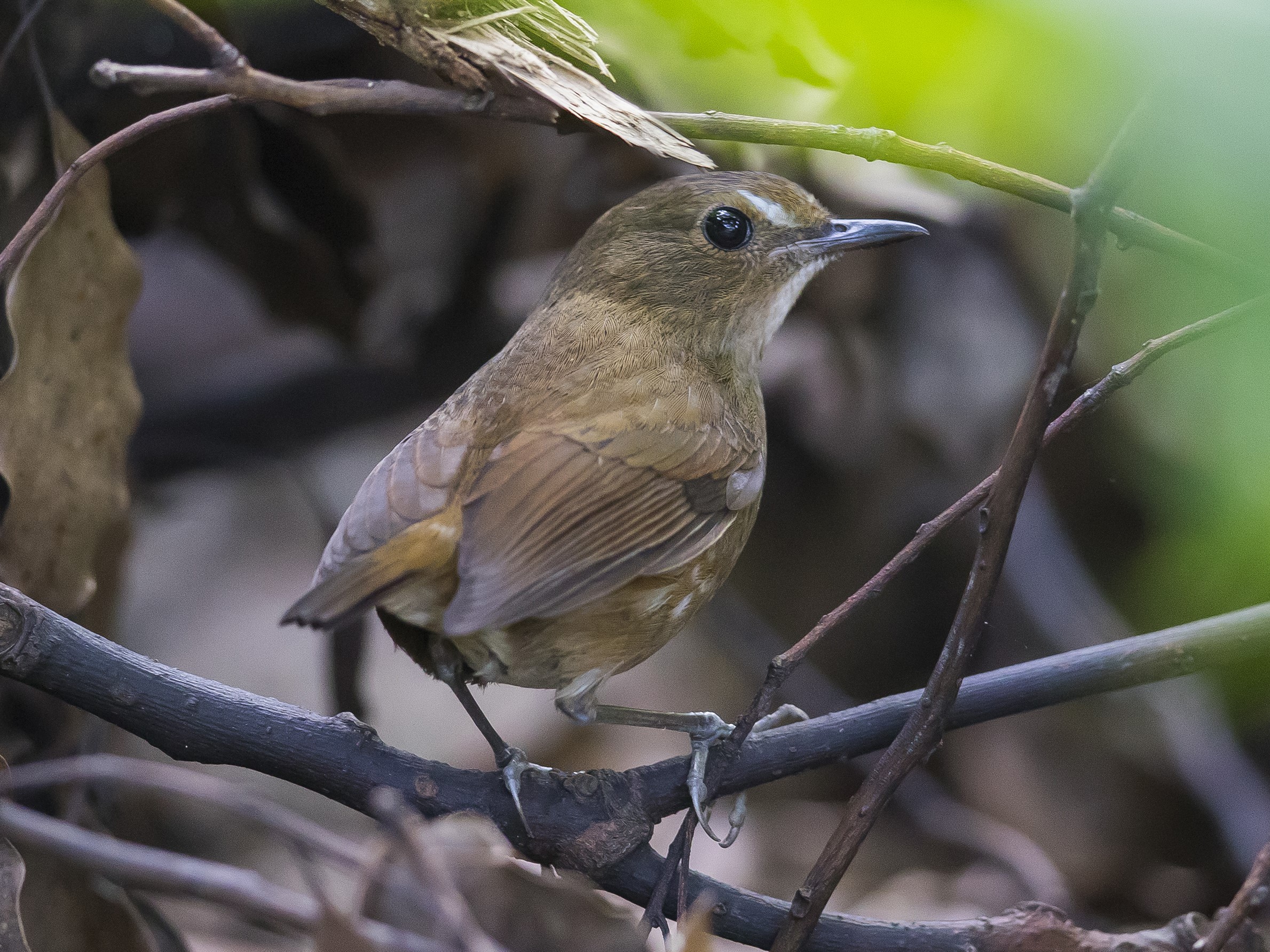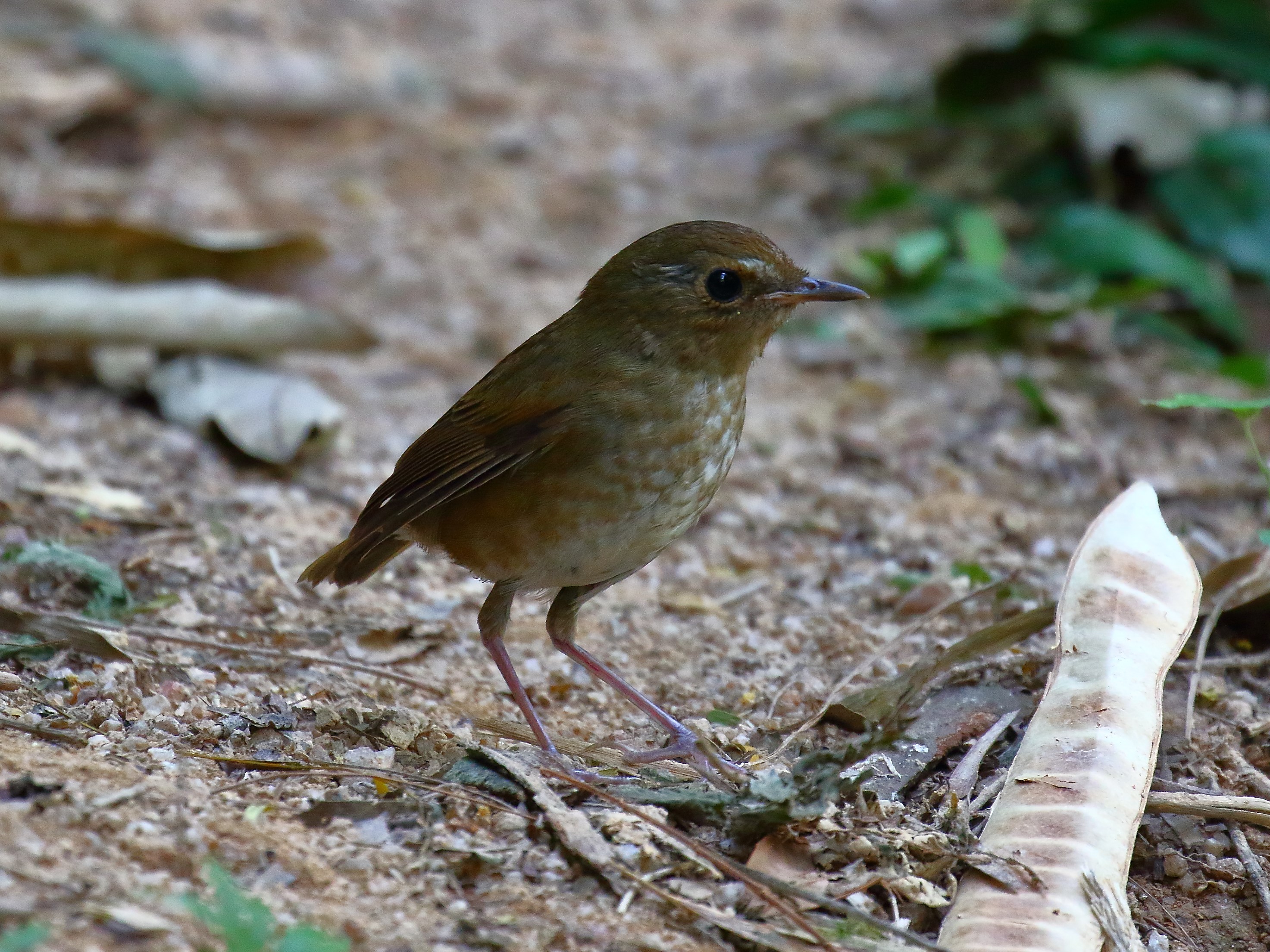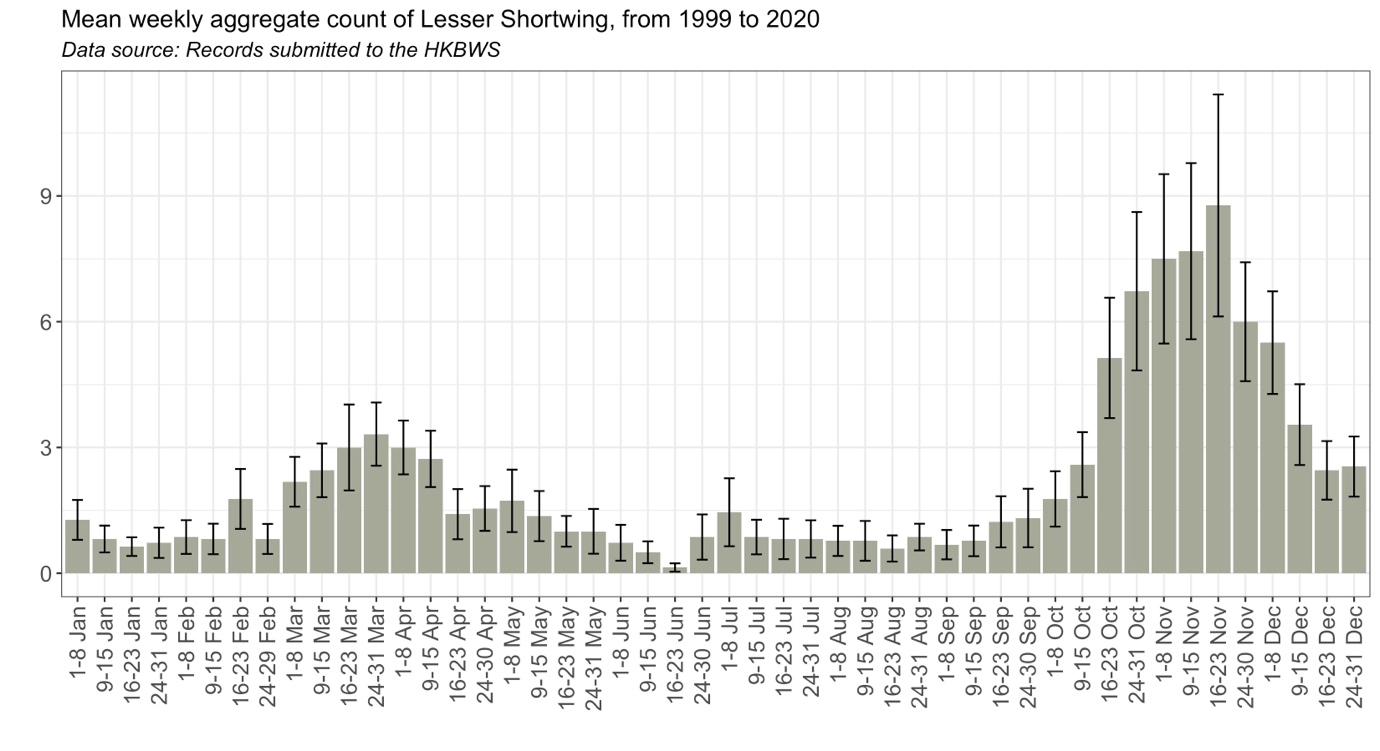Lesser Shortwing Brachypteryx leucophris 白喉短翅鶇
Category I. Locally common resident and winter visitor to closed-canopy shrubland and forest.
IDENTIFICATION

Apr. 2018, Matthew Kwan. Adult.
11–13 cm. Fairly nondescript, small, brown babbler with a usually inconspicuous white eyebrow that is flared when excited. Wings and tail very short; whitish below, with brownish-buff breast and flanks; long legs pink. Female is more rufous.

Oct. 2019, Kenneth Lam. Juvenile.
Young birds have more obvious buff scaling below.
VOCALISATIONS
The song, given on both breeding and wintering territories, is a loud and somewhat shrill warble that begins with several slightly hesitant notes followed by a short medley that usually terminates in a quieter flat buzzing or throaty rattle.
DISTRIBUTION & HABITAT PREFERENCE
Locally common in closed-canopy shrubland and forest with a dense understorey. Early records in the first decade of this century were concentrated in the Tai Mo Shan massif (Tai Po Kau, Ng Tung Chai, upland forest on Tai Mo Shan and Shek Kong), with a small breeding population in shrubland on the mountain above 700m.
During the 2010s, it spread to other wooded areas in the New Territories including Tai Lam CP, Pat Heung, Sai Kung (Yung Shue O, Pak Sha O) and Bride’s Pool, and presumed breeding birds were recorded at lower altitudes. Records away from the central New Territories are increasing, with recent sightings on the islands of Lantau (Ngong Ping, Tai O), HK (Mount Davis), Po Toi and Lamma. While it normally stays away from human habitation, there are winter records in urban areas such as in Telford Plaza and park-like habitat at Ho Man Tin.
While it was not recorded in the breeding bird survey during 1993-96, it was recorded in 15 1km squares in that of 2016-19 (1% of the total survey grids). Most of these were located on the Tai Mo Shan massif. A similar increase was noted in the winter atlas surveys, from a single 1km square in 2001-05 to 18 in 2016-19, with most records in the northeast and central New Territories and central Lantau.
OCCURRENCE
Lesser Shortwing was first recorded in 1998, when two birds were ringed at the Kadoorie Agricultural Research Centre on 14 November (Carthy 2004). It has colonised HK in the interim and now occurs year-round (Figure 1). Most of the counts concern singles or a few birds. The highest count is 14 at Tai Lam Country Park on 1 November 2017, a site that has been colonised by presumed breeding birds in recent years. A count of 11 birds was reported at Shek Kong catchment during 12-13 November 2016.
The two peaks of occurrence, in early spring and late autumn (Figure 1), are largely due to increased incidence of vocalising birds establishing territories. The higher autumn numbers are no doubt due to post-breeding dispersal; there is little if any evidence of migration.
Population size has rapidly increased in the last two decades, with the aggregate peak count of birds per week reaching 50 in 2019 (Figure 2), though to some extent this is due to increased observer activity.
BREEDING
The first confirmed breeding record was at Tai Mo Shan on 10 July 2001. Being a skulking and secretive species, sightings of nest-building or other aspects of breeding behavior are rare. Juveniles have been noted from July.
BEHAVIOUR, FORAGING & DIET
Usually solitary and strongly territorial in both breeding and non-breeding seasons. Consequently, song can be heard in much of the year, though least of all in the cold weather of midwinter. The frequency of song increases markedly in March and remains high to the end of May. In the midsummer period of June to mid-September the incidence of song is again low, but it picks up in the last ten days of September and particularly in the second half of October when winter territories are established. The song can be frequently heard until at least mid-December and in some years later depending on the arrival of cold weather.
Skulking and highly secretive, usually remaining deep in the lower branches of shrub or forest understorey. Primarily feeds on invertebrates, though no details.
RANGE & SYSTEMATICS
Occurs from the eastern Himalayas east to southeast China and south to north Indochina and south Vietnam. Also occurs in Sumatra and Java east to Timor (Collar 2020).
There are five subspecies, two of which occur in China. Only B. l. carolinae occurs in south China, including HK, and north Indochina, while B. l. nipalensis occurs to the west.
CONSERVATION STATUS
IUCN: Least Concern. Population trend decreasing.
Figure 1.

Figure 2.

Carey, G. J., M. L. Chalmers, D. A. Diskin, P. R. Kennerley, P. J. Leader, M. R. Leven, R. W. Lewthwaite, D. S. Melville, M. Turnbull and L. Young (2001). The Avifauna of Hong Kong. Hong Kong Bird Watching Society, Hong Kong.
Carthy, D. P. (2004). Lesser Shortwing at Kadoorie Agricultural and Research Centre: the first record for Hong Kong. Hong Kong Bird Report 1999-2000: 192-196.

